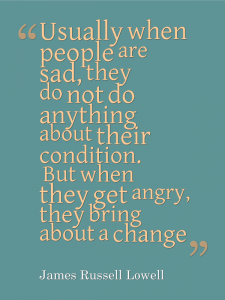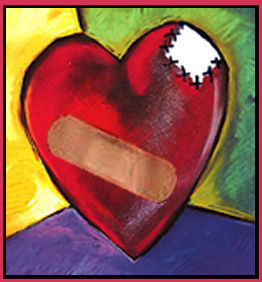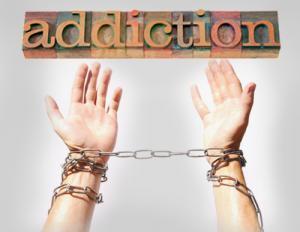Colin C. Tipping's Blog, page 5
September 3, 2014
How to renegotiate your relationship
 How to Renegotiate Your Relationship
How to Renegotiate Your Relationship
Expanding into Love is not simply about increasing romantic love; it is about increasing your CAPACITY to love, albeit in a very different way. It means developing the ability to accept people the way they are and seeing the divinity in them. . . no matter what.
In the early phase of our lives, before we have awakened to the truth that we are all one, romantic love tends to involve control, demands, domination, expectations and even exploitation of the other. It is a highly conditional kind of love.
(It is also what makes relationships perfect as a way to experience the pain of separation, that being the purpose of coming here in the first place.)
In the second phase of our lives, after we have awakened, it is our task to expand beyond that kind of love into a love that offers freedom, mutual respect, equality and honoring of differences.
By the way, this does not just apply to our romantic relationships, but to all relationships. (What if everyone did this? There would be no more wars.)
That said, however, this is no easy task. Old habits die hard. Our old ways of relating are unconscious and seem perfectly natural. Expanding into this new way of relating takes conscious effort and is really nothing less than advanced spiritual practice.
Incidentally, it is obviously best if both partners engage in this expansion of consciousness within the relationship. But it is not essential. When you do it on your own, it may pull your partner along anyway, almost without him or her knowing it.
But if he or she is totally resistant, then this becomes an even more of a spiritual challenge for you to find acceptance of him or her just the way he/she is. On the other hand, if the resistance is such that no progress can be made, then leaving the relationship might be the best option.
Assuming both are engaged in the process, the next step is to renegotiate the relationship in the direction suggested above. I suggest doing this in 4 stages:
1. Assess where things stand today, looking at how things have progressed since the beginning right up to present day. Obviously, both parties need to be brutally honest and accepting of the other’s assessment.
2. Look at your spoken (and unspoken) assumptions and expectations, demands and manipulations, and to see how they have worked out. Reflect on how you have given yourself away, compromised or sold out to get what you thought you wanted. Then, how much love do you have now and what kind of love has it become? Discuss where practical and/or structural changes might be made and what might need to be done to shift the energy between you.
Almost certainly, there will be some Radical Forgiveness and Self-Forgiveness to do at this stage. Make a list of all grievances, regrets, disappointments and guilt trips, and then do the forgiveness work. You really want to start with a clean slate before moving on to the next stage, which is where you begin to consciously renegotiate the relationship in very stark terms.
3. Establish the core values on which your future behavior in the relationship will be based, irrespective of how it had been in the past, requiring them to be respected and honored at all times henceforth.
4. Establish and declare your boundaries and whatever else you consider to be the conditional factors in deciding whether or not the relationship continues.
If you are looking for a clear and focused way to do this work, I suggest you look at our brand new Expanding in Love Online Workshop. It includes the Assessing My Relationship online worksheet, which enables you to look at how things have progressed since the beginning right up to the present day. It takes you through all 4 stages, just as if you were attending a live workshop. . . and for a limited time, select a free bonus gift when you sign up.
I wish you success in this challenging endeavor.
Blessings,
Colin
August 25, 2014
Time to Assess the Relationship?
 Time to Assess the Relationship?
Time to Assess the Relationship?
In my book Expanding into Love, I make the point that in the first half of our incarnation, prior to our awakening at about mid-life, the purpose of relationship is to create opportunities to feel the pain of separation, that being the very thing we came in to experience.
We wanted that so we could learn that separation is an illusion, and that in reality there is only Love and Oneness. The purpose of relationships in this first phase, therefore, is about experiencing ways of feeling separate and alone.
Of course, that’s not the image we are told to expect from being in relationship. We are told it will make us whole, and we will live happily ever after. It’s a lie, of course.
That’s OK though. We have to play the separation game without any awareness of the real reason for the difficulties, otherwise we would get no value from them.
Relationships in that phase, then, tend to be about domination, control, demand, and expectation. This leads to things like infidelity, betrayal, abandonment etc., all good ways to experience the pain of separation.
Once we begin to awaken, however, the purpose of relationship shifts dramatically. It now becomes about healing the separation, forgiving the past and practicing coming together as equals, allowing freedom, giving respect and seeing the other as perfect the way they are, demanding nothing and being free of expectation.
We call this the Expanding into Love Phase, because it is about increasing our CAPACITY to love, which means being able to accept people as they are and seeing the divinity in them no matter what.
Obviously, this is not an easy transition to make. Old habits die hard. It is even more difficult if one partner is not awake and sees no need to make the shift.
This is not necessarily a reason to leave the marriage, however. In fact, it may offer a great opportunity to learn unconditional acceptance.
A lot of people have a tendency at this time to jump ship too early and miss the growth opportunities inherent in the process of making this shift with the person you know best.
That said, no matter how the relationship looks now that awakening has occurred, whether it has happened for both of you or not, it is time to make a realistic assessment of the relationship, and to begin a process of re-negotiating it based on an agreed set of values, boundaries and requests.
Only then will you be in a position to decide if it is worth going on with it or not.
Blessings,
Colin
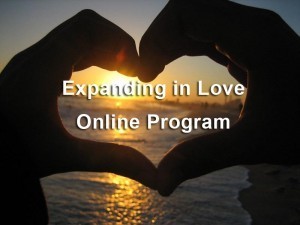 P.S. If this article really resonates with you, check out our brand new Expanding in Love Online Program, it’s an invaluable aid to the process of re-evaluating and re-negotiating your primary partnership.
P.S. If this article really resonates with you, check out our brand new Expanding in Love Online Program, it’s an invaluable aid to the process of re-evaluating and re-negotiating your primary partnership.
August 15, 2014
Depression – A Coping Mechanism
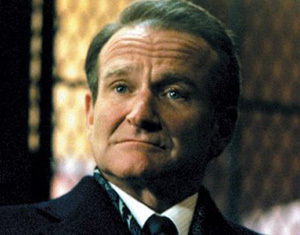 Depression – A Coping Mechanism
Depression – A Coping Mechanism
In the wake of Robin Williams successful but tragic suicide, the topic of depression has once again come to the fore.
Unfortunately, the coverage of the death of Lauren Bacall the very next day provided a diversion and an excuse to turn away from the topic of depression and the uncomfortable truth that 1 in 6, and in some places 1 in 5, people are on anti-depressants.
People who have severe clinical depression because of a real chemical imbalance in their brains need medication like this, of course, and thank God it’s available to them. It works wonders for that kind of thing.
However, the vast majority of those 1 in 5 being prescribed anti-depressants are surely not clinically depressed. If they are, then something very serious is happening to us en masse.
But, I don’t think that’s the case. People are just generally pissed off and don’t really know why, or don’t know what to do about it. But given our present approach to the treatment of depression, the 1 in 5 are numbed out with medication.
In the discussions I heard on UK radio and television these last few days, I have heard a lot about the effects of depression, one of which is suicide, but almost nothing about the cause. Just declaring it an illness, like it is something that just happens for no apparent reason is no help at all. There must be a cause.
Depression is not an emotion. It is a coping mechanism. It’s a way to avoid dealing with the emotional pain that is just under the surface, turned inwards and manifesting as feelings of unworthiness, self hatred and utter futility.
It has been my observation over the last 20 years working with basically well people in my practice, that this kind of depression is simply a mask. Underneath that depression is repressed rage, fear, resentment, shame and guilt – you name it. And most of it has its origins in unresolved childhood wounds.
Nine times out of ten, once you deal with those wounds and the repressed hurt and pain associated with them, the depression lifts. The need for the coping mechanism goes away.
A member of my own extended family had suffered serious bouts of depression. After some discussion we discovered his pain related not to the fact he was adopted but that his own birth mother had abandoned him. Deep down he felt he was not wanted and not worthy to be alive. I helped deal with that. He is now functioning extremely well, albeit with some medication at a relatively low dose.
I have had great success with this over the years using the Radical Forgiveness methodology. This has proven to be a very successful way of healing childhood wounds and restoring the person’s self-worth.
On the BBC today, a psychiatrist made the point that the earlier you can catch it, the better. I agree – but please not just with a pill that will only numb the pain again. If, instead, we give them a way to heal those wounds, their symptomology wouldn’t develop into full blown clinical depression that might then, at that point, need medication.
August 13, 2014
Bringing your family to work
I doubt it would surprise you to learn that, just as issues in your family of origin cause us problems in our everyday lives in general, and in romantic relationships in particular, they get acted out in the workplace as well.
That fact is we bring more than our lunch to work with us each day. We bring many generations of our family with us. The way we deal with conflict, how we talk to and engage co-workers, how we manage our employees and our bosses, is a direct reflection of what we have buried in our subconscious minds.
I have coined a word for this emotional baggage we have stuffed down and tried to forget. It is HUMENERGY.
What we have shoved down deep is not inert. I believe we have an innate desire to heal that humenergy, and we are always looking for an opportunity to heal it. The work environment is the perfect playing field for healing all our unresolved issues.
For example, if we have unhealed issues with our mother, we will attract someone just like her at work with whom to work out those issues. If we had a very authoritarian father, we will create a situation where we have a boss who is a bully just like him. We will then work out our issues with him.
This is good for the individual at the spiritual level, but might be terrible from a career point of view. More often than not, it is disastrous for the company.
Suppose, for instance, that your father always said you will never amount to anything, and that became a subconscious belief. Then, when you got a good promotion, guess what? It didn’t fit your belief system, so you began to sabotage yourself and everyone around you so you could be right. The result is disaster.
With co-workers, we may act out our past relationships with siblings; with bosses; our past relationships with our parents; and so on.
The answer of course, is to recognize that “we are never upset for the reason we think.” So whenever a conflict arises at work, you know it is triggering something that needs to be healed.
So you do a worksheet on the person with whom you are upset. That not only dissolves the upset with him or her, but heals the underlying issue in you that was being activated. It really is that simple.
We have a slightly modified Radical Forgiveness worksheet for the corporate environment. It is called The Balancing Humenergy Worksheet.
Using this and other tools has an effect beyond just you. It shifts the energy in the workplace around you, and it is catching. (Love, which is the energy behind forgiveness is infectious.)
Co-workers become more cooperative and more productive. When owners and managers use the Radical Forgiveness tools themselves and show others how to use them, it raises the vibration of the company. The benefits of that is increased productivity, higher morale, less attrition and higher profits.
Blessings,
Colin
P.S. Radical Self-Forgiveness is an important tool for healing your workplace regrets, join me next Thursday, August 21, at 1:30 pm for a FREE webinar on the Radical Self-Forgiveness Worksheet. Even if you can’t join me at that time, registering guarantees you’ll be invited to the 72 hour replay, so you can listen at your convenience.
August 6, 2014
Make Peace with Your Family
Make Peace with Your Family
Break the Cycle with Radical Forgiveness
 If you were to observe the dramas and issues you have been challenged with all through your adult life, you are likely to find that most of them have their origin in childhood within the family unit. You might notice they fall into two categories:
If you were to observe the dramas and issues you have been challenged with all through your adult life, you are likely to find that most of them have their origin in childhood within the family unit. You might notice they fall into two categories:
1. Intentional or (mostly) unintentional woundings by your parents that you have repeatedly acted out in a variety of ways over the years.
2. Your having taken on the pain and wounds of your parents and generations past and acted those out as if they were your own.
In both cases, your reactions to the traumas and pain you experienced in those early years would have caused you to form specific beliefs about yourself and the world that reflected your experiences.
These, in turn, became like internal gyroscopes that created your life in line with those beliefs. A very typical one is where you, say, felt abandoned at some time in your childhood and then created a pattern of abandonment in your adult life.
In fact, here’s one way to find out what those beliefs were: Just look at what is showing up in your life. Your life continually reflects your consciousness.
The remedy is to forgive your parents for creating the negative beliefs that you have been acting out and then ditch the belief.
To download a free Radical Forgiveness worksheet, click here. (This will take you to the Free Stuff page of Colin’s Cafe. If you have not registered before, click the link to open a free account and you will have access to all of the material on the Free Stuff page of the Cafe.)
Most people are aware of this dynamic, but generational pain is not so well understood. It means that people are carrying pain that is not necessarily theirs and acting it out as if it were their own.
They have identified with the pain of their parents, and their parents’ parents, and so on, back through time, and then have owned it.
Part of it, I think, is an inner desire to heal that pain on their behalf. In fact, they may have chosen to come in through their particular parents for that purpose.
But if we have no awareness of that, it just becomes part of the generational pattern and gets handed on down to the next generation. That is, unless we heal it – using Radical Forgiveness, of course.
There is new evidence showing that unreleased emotional pain is carried forward in the genes from generation to generation. This proves that the origin of your pain may well go back countless generations!
Look what is happening in Gaza right now. As I wrote in my Saturday blog, the war going on there is about healing the victim consciousness that has accumulated over the centuries, generation after generation. It has to stop somewhere.
And guess what? Because you and I and everyone else who is awake and are able to see beyond the drama that is happening out there, we are the ones who can stop it using Radical Forgiveness… in cases like Gaza, by using the Radical Transformation Worksheet I spoke about last Saturday.
To download a free Radical Transformation Worksheet, click here.
But, that said, we are also called to help break the cycle that may exist in our own families.
Ask yourself: Are you carrying your mother’s pain, your father’s pain or grandparent’s pain? Does the pain go back even further?
If you see that you are, you need to forgive yourself for stealing their pain and acting it out for them. You have no right to do that. It’s not your pain. They chose it, so they have to heal it.
To download a free Radical Self-Forgiveness worksheet, click here.
Like most people, you’ve probably come to this awareness at mid-life, probably after you have raised your children, so it’s going to take some Radical Self-Forgiveness to release yourself from how you might have continued the cycle. But as you let go of the pain that is not yours, your children will too. Only then will the cycle cease. So, do it now, if only for their sake!
Blessings,
Colin
P.S. For step-by-step instructions on using the Radical Self-Forgiveness worksheet, join me on August 21 at 1:30 pm Eastern time for a free webinar. If you can’t come at that time, signing up will guarantee you get invited to the 72-hour replay, so register now!
Click the arrow below to hear be read the first 2 minutes from Application 11, Make Peace with Your Family Origin & Heal from my newest book, 25 Practical Uses for Radical Forgiveness.
August 1, 2014
The Victim Game in Gaza
I have to admit to having been a bit reluctant to wade into the swamp that is now the Gaza situation, but I feel the need to do so now.
That’s because it’s a prime example of where we can make a real difference by using one of the tools associated with one our Radical Living Strategies – the Radical Transformation Worksheet.
This ‘Tipping Method’ worksheet empowers us to begin transforming the energy of any world event out there that seems to us to be tragic or disastrous. And this thing between Hamas and Israel certainly qualifies as being that and more.
Although it seems on the surface to be about rockets, tunnels and the blockade of Gaza by Israel, we know that what really fuels the conflict is a deeply ingrained victim consciousness on both sides.
Unless and until that is changed, no amount of political pressure, diplomacy or military intervention will have any effect whatsoever.
Any Jew will tell you that the Jewish race carries the victim identity like no other. It has acted it out over centuries to perfection and is continuing to do so today, even while it learns now what it is like to be the persecutor of another race.
The Palestinian history, too, is one that is characterized by persecution and displacement, so you’d think each race might understand each other’s pain and generate some empathy between them.
But each have their own victim identity and see the other as their victimizer. It is the classic attack and defense cycle that has served to keep human beings separate from each other for eons.
But we each have to admit we do exactly the same. We all create separation in all sorts of unpleasant and sometimes violent ways and justify it with a strong sense of righteousness.
No wonder this war is making us feel so uncomfortable. It is mirroring for all of us how capable we all are of creating separation just for the sake of it.
Herein lies the potential of the Radical Transformation worksheet. Through its use, we can transform the energy in Gaza and Israel if we first forgive ourselves for creating separation, forgive them for doing the same and then try to see the perfection in the situation.
To download a Radical Transformation Worksheet at no charge, click the following link:
Radical Transformation Worksheet
We will shift the energy in a very powerful way if we hold it that there is a purpose in each of the protagonists battling it out to the point of exhaustion and that the people who are dying and wounded are souls that have volunteered to act this drama out in that way for all of us, so we can heal.
(Brokering a cease-fire is a knee-jerk reaction and will not change anything. It is just a symptom of our own discomfort as we look in the mirror.)
Breakthrough comes AFTER breakdown; not before.
As the breakthrough occurs for them, they would see themselves in the mirror and wake up to the fact that separation is an illusion. It might even dawn on them that we are all one and that they are simply fighting themselves.
If both sides (and us too) are able to use the war in this way to raise our vibration, it might be a catalyst for the massive shift in consciousness we are all hoping for.
If you get this and feel inclined to take a few moments to help bring the two sides to the point of breakthrough through projecting healing energy into the situation, download a Radical Transformation Worksheet now and know that by filling it out, you will be making a significant difference. All mass healing starts with the individual.
Colin
P.S. This video was passed to me today. You might like to watch it. The title is Forgiveness is at the Heart of Human Greatness. It actually inspired me to write this blog.
July 30, 2014
10 Ways to Not Feel Emotional Pain
Over the last several weeks, I’ve been writing about overcoming addition, perfectionism, past trauma, and anger. I want to share this video, it has, in the past generated a lot of discussion, and I hope it will be a good reminder for you to watch out for the ways we cover up our pain. Which ones reflect your avoidance strategies?
July 23, 2014
Anger Is Good
Anger scares people. Men especially are frightened of it because they fear they might lose control and hurt someone if they allow themselves to really feel it.
David Hawkins, MD., Phd., the author of Power vs Force, put anger fairly high on the list of his Scale of Consciousness. He says that, so long as it can be given expression and is not repressed, it is good because it spurs into us action. It is a creative emotion.
At the same time, it can cause great damage if not properly controlled and managed. Knowing how to control one’s anger without denying it or suppressing it is, therefore, of paramount importance.
Radical Forgiveness can help.
The best working definition of an emotion is a thought attached to a feeling. Which comes first depends on the type of stimulus, but my guess is that in most cases it is the thought that causes the chemical reactions in the body that we register as the feeling.
The emotion is the result of cause and effect. The thoughts are the cause and the feelings are the effect.
The feelings themselves happen automatically and are beyond our control. What we do have dominion over, however, since they are the cause, are our thoughts.
This means the key to managing our emotions is to consciously monitor what passes through our mind. Then, be open to thinking in ways that will reduce the likelihood of these emotions causing a violent or extreme emotional response like rage, terror or shame.
The most obvious cause of strong feelings bringing out our worst emotional response is victim consciousness.
If we believe we are always the victim in every situation, and other people are responsible for our discomfort and every unpleasant situation that occurs, then anger will almost always be our default response. We will feel justified in feeling this way and become very self-righteous.
If, on the other hand, we are grounded in the Radical Forgiveness philosophy that says we are always accountable for what happens in our lives, and that, in spite of how things appear, nothing wrong or right is happening, then our emotional response will be very different. (Given a little cooling down time perhaps!)
We can avoid going into Victimland by using the 4-step, Emerge-n-See Radical Forgiveness process. The four steps are:
1. Look what I created!
2. I notice my judgments but love myself anyway.
3. I am willing to see the perfection in the situation.
4. I choose peace.
If we can remember to do this, the belief in the Radical Forgiveness idea will come to be part of the mix and will begin to modify our response. Nevertheless if tempers do not cool sufficiently and we are still feeling like victims, we may have to manage the anger that arises in the moment. You do this in four stages.
Stage 1: Recognize the Feeling. Acknowledge to yourself that you are angry. Bear in mind that anger is a secondary emotion and is usually sitting on top of another emotion, such as hurt, sadness, jealousy, fear, resentment, disappointment, etc. Anger is used as a way to cover up the real pain and protect the heart. So, if you are aware, you might be able to identify the emotion under the anger. If not, that’s OK. Just feel what you can feel.
Stage 2: Accept the feeling. Be OK with the feeling and love yourself for having it. You are a human being and it is natural that you feel anger in this moment. Do not judge it. Remember, there is no such thing as a negative emotion. It only becomes negative when you deny, suppress or repress it. Emotions give you feedback about whether you are lowering or raising your vibration, so they all serve a good purpose. They cover a wide range from utter despair to perfect bliss, and we are all given the capacity to feel them all. Who are we to say that any one of them is bad?
Stage 3: Delay the Expression of the Feeling. This may not be necessary. If it is safe to express it in the moment, go ahead and do so. If, on the other hand, it would not be appropriate, delay the expression of it until it is safe to let it go.
Stage 4: Express How You Feel. Find a safe way to get the feelings out of your body by doing something physical, like speaking it out, crying, shouting, beating cushions, chopping wood or any kind of activity. It helps if you have someone with you to be a witness.
So, be OK with anger, but ‘stay cool’ with Radical Forgiveness. It might keep you out of a whole lot of trouble.
Click the arrow above to listen to a two minute sampling of the chapter, “Manage Anger and Other Juicy Emotions” from the audio book, 25 Practical Uses for Radical Forgiveness.
July 16, 2014
Healing Trauma
There are many ways in which you can become traumatized, especially in childhood. Trauma is caused by events that destroy your sense of security, your trust in everyone around you and even threaten your life.
The more fear there is involved, the more intense the trauma is likely to be. It can be caused by a one-time event like a car crash, a natural disaster or a violent attack. Sexual abuse is almost always intensely traumatic.
Trauma can also come from being in an ongoing, highly stressful situation, such as living with an abusive dysfunctional family or in a crime-ridden area. Fighting a diagnosis of cancer or similar serious illness is very stressful. The sudden death of a loved one is often traumatic, too.
We all have natural defense mechanisms that help us cope with the shock and the fear experienced in traumatic situations.
Denial, going out of body or disassociating, and suppression of emotional pain are typical mechanisms, and they work well as a temporary fix.
Some people come out of it after using these mechanisms for a while. Others don’t.
They become depressed, addicted to mind-numbing substances, and often exhibit mental and behavioral problems. This becomes identified as post traumatic stress syndrome.
Of course, anyone who has been severely traumatized and has not yet come out of it should seek qualified professional help.
However, let me explain why I think Radical Forgiveness Therapy should be at least part of your protocol if you have been traumatized.
If your trauma was, or is, less severe and you are functional, it might well be sufficient. Let me explain why.
When we look at trauma from a Radical Forgiveness perspective, the suffering is reduced if we can begin to be open to the idea that the traumatic experience could possibly have been what your soul created for its learning.
If you can go there – and it is a very big step – you might find yourself able to wean yourself off some of the defense mechanisms so you can find a way to talk about it.
That’s always the first step in dealing with a trauma. That’s also the first step in the Radical Forgiveness process.
The more you talk, the more the tension is released from your mind and body. Being encouraged to focus on body sensations as you talk gets you more in touch with the memories and feelings you experienced at the time, as well as those you feel as they relate to your story. (Feeling the feelings is the second step in the Radical Forgiveness process.)
One of the effects of having some of the defense mechanisms made permanent is that you may have numbed out. You are unable to feel your feelings. It’s not that the feelings are not there. You just are unable to access them.
Again, doing something physical helps discharge pent-up “fight-or-flight” energy – something explosive and fast moving like beating some cushions with a tennis racquet.
Beating the cushion is a technique I use all the time in Radical Forgiveness Therapy. You have to get in touch with the raw emotion behind what happened. You cannot heal what you don’t feel. That’s especially true when there is real trauma involved.
But I never recommend that you do it on your own without having support from someone who can hold the space for you to go through your anger.
The 3rd stage in the Radical Forgiveness Process is where we try to take some of the heat out of the trauma by trying to rationalize it, understand why it happened, and so on.
The fourth step is where we go into overdrive in the healing process. It is the part where we introduce the idea to the traumatized person that their Higher Self had a hand in creating the situation for it’s own learning and growth.
However, the timing has to be right. The Radical Forgiveness reframe has to be introduced carefully and with due respect for the person’s existing consciousness at the time.
If it is proposed too early, the person can be re-traumatized. The idea that they created it and that, from a spiritual perspective, it was entirely perfect might be just too radical.
My main experience over the years has been with people traumatized through sexual abuse and other relationship-based traumas, as well as those having lost someone in tragic circumstances.
But no matter whether a person has been traumatized by a car accident, a severe injury, or a breakup of a relationship so difficult they can’t move on, or when people in any way feel they are unable to have a normal life because of what happened to them, I am totally convinced that Radical Forgiveness Therapy is at least part of the answer.
It saddens me that so many people remain burdened by a trauma all their lives just because they haven’t been given the chance to see it from the Radical Forgiveness perspective. I hope this will change when we all start to wake up to this truth.
Blessings,
Colin
P.S. I am presently running a contest where someone can win a free one hour coaching session with me. All you have to do is write a testimonial about one or more of the Radical Living tools you have used. The contest ends July 31, 2014. Follow the link below if you wish to enter.
http://survey.constantcontact.com/survey/a07e9fy5o17hwgo1v49/start
Click the arrow above to play a two minute sampling from the chapter, Release the Trauma and Let’s Get on with Life” from the audio book, 25 Practical Uses for Radical Forgiveness.
July 9, 2014
Overcome Your Addiction
The way out of an addiction is to first find out what pain is being medicated by the substance or experience of choice, and then to use the tools of Radical Forgiveness to release the pain.
It really is that simple.
During dinner with a few people one evening, I happened to overhear a conversation in which a guy was saying he had been 14 years sober, once he realized he was using alcohol to medicate the pain of having been sexually abused as a baby by his mother.
But then I heard him say, “But you know, I will never be free of my addiction until I know why she did it.”
So I piped up and said, “Then you are screwed, aren’t you?”
“How so?” he asked quizzically.
“You’re screwed because you are making your healing contingent upon getting an answer to an unanswerable question. No one knows why. And, ‘Why?’ is a victim’s question, anyway.”
“Oh. So what do you suggest?” he asked in a sarcastic tone.
“Hang out in a different question,” I replied. “Like, ‘I wonder what the gift might have been in having had my mother do that to me?’
“It’s an equally unanswerable question, but a much better question to hang out in than the other one. This one will free you from your addiction, whereas the other dis-empowers you and keeps you tied to your addiction.”
He didn’t like it, but the next day I got a phone call from him. “I have been up all night thinking about what you said, and I get it. You have saved my life. Thank you.
I truly believe the 12 step approach is the best we have at this time and remains a divinely inspired program. However, as this story shows, Radical Forgiveness takes it one giant leap further and offers a less shame-based way out of the addiction.
All addictions are created out of a need to medicate emotional pain so as not to feel it. The guy in the story got further than most. The majority of addicts get stuck at Step 4, which is where they are asked to take a moral inventory of all their defects. (The very term ‘defects’ is shaming.)
For most it is just too painful to bring all that deeply repressed shame to the surface. So they duck the process and become addicted to meetings instead and often remain dry drunks.
If, at stage 4, they would use both Radical Forgiveness and Radical Self-Forgiveness to process the events, it would make a huge difference to their healing.
They could then look back at their lives and come to terms with what has happened to them by recognizing there was a spiritual purpose in everything that happened.
They would then be able to free themselves from shame and blame and be able to continue with the remaining steps.
It would also be of great assistance to those who get to Step 9. This step requires they make amends to people they have harmed.
Doing some Radical Self-Forgiveness and Self-Acceptance beforehand would give it greater meaning and more authenticity.
That’s because they would be doing it, not out of a sense of obligation, but with a different consciousness – more from their heart, with a great deal of love and gratitude for the person they are apologizing to.
They would also be doing it with a different mind-set. While accepting full responsibility for what happened, they would come from a place of knowing that some higher purpose was being served.
That said, I am actually quite skeptical about the advisability of doing an amends for long-ago hurts, and the bigger the harm done, the more skeptical I am. It can re-traumatize the victim and open old wounds. All too often it comes over as dumping, benefiting only the person doing the amends.
If one does the Radical Self-Forgiveness process on oneself first, and then, in solitude, goes into the heart and asks for forgiveness from the other person and from oneself, that is much more effective than doing the amends as “a process.”
It leaves the other person out of it completely, has no potential to re-injure the victim, and will have a much more profound effect for both of you. Moreover, it can be done many times over as a meditation until such time as it feels complete.
What I have seen, ironically, is that the person to whom the amends would otherwise have been directed will feel the shift in energy. Often the person offers their forgiveness quite spontaneously and without prompting.
It is amazing how this happens, and is far more healing for the victim (and for you) if they come to a place of forgiveness on their own.
If you are in a 12 Step Recovery program, I suggest you familiarize yourself with the process of Radical Forgiveness and Radical Self-Forgiveness. Many of these tools are available in Colin’s Cafe.
Discuss it with your sponsor so he or she knows what you are doing and is in alignment with it.
Blessings,
Colin
Click the arrow above to hear Colin read the first two minutes of the Chapter “Overcome Your Addiction with RF as the Next Step” from his audio book, 25 Practical Uses for Radical Forgiveness.
Colin C. Tipping's Blog
- Colin C. Tipping's profile
- 43 followers




